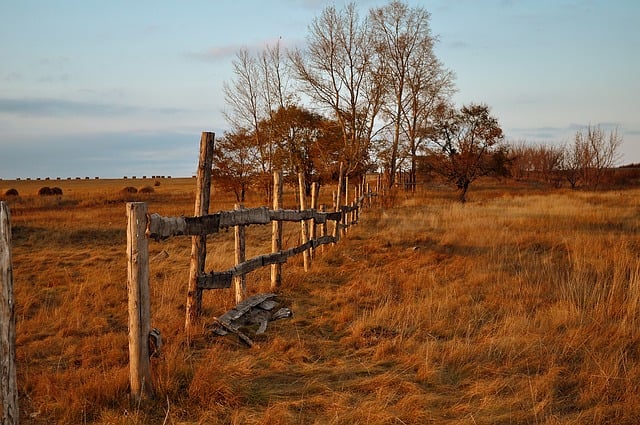Taming Large Spaces: Cost-Effective Fencing Solutions for Every Budget
Large properties present unique challenges when it comes to fencing. This article delves into practical and cost-effective solutions for securing and enhancing your expansive outdoor spaces. We explore the evolving landscape of fencing materials, from traditional options to innovative, budget-friendly alternatives. Learn about efficient installation techniques designed for longevity and cost savings, as well as essential maintenance tips to ensure your fence remains a valuable investment for years to come.
- Understanding Large Property Fencing Needs
- Traditional Fencing vs Cost-Effective Solutions
- Materials: Budget-Friendly Options Explored
- Installation Techniques for Longevity and Savings
- Maintenance Tips to Maximize Your Investment
Understanding Large Property Fencing Needs
Fencing a large property presents unique challenges compared to smaller plots. The sheer size demands durable, long-lasting materials that can withstand harsh weather conditions and potential animal intrusions. Additionally, aesthetic considerations come into play, as the fence should complement the natural beauty of the landscape rather than overpower it. Property owners must also consider functionality, ensuring the fence provides privacy, security, and perhaps even a visual barrier to control noise levels.
A thorough understanding of these needs is essential for selecting suitable fencing solutions. Different materials offer varying levels of strength, durability, and visual appeal. For instance, chain link fences are cost-effective and provide good visibility but may not offer the same level of privacy as wooden or vinyl options. On the other hand, wood can enhance the natural ambiance but requires regular maintenance to prevent rot and pest damage. Vinyl fencing is low maintenance and available in various styles, catering to different aesthetic preferences while remaining a budget-friendly option.
Traditional Fencing vs Cost-Effective Solutions
Traditional fencing methods often involve expensive materials and labor, making them a significant financial investment for large properties. The process typically entails hiring specialized contractors who use premium-priced components like wood or metal to construct fences that may require regular maintenance and repairs.
Cost-effective fencing solutions offer an attractive alternative by prioritizing affordability without compromising functionality. These modern approaches utilize innovative materials such as vinyl, composite, or chain-link, which are not only more budget-friendly but also low-maintenance. Additionally, pre-assembled fence panels and do-it-yourself kits simplify installation, reducing labor costs and making it feasible for property owners to take on the project themselves.
Materials: Budget-Friendly Options Explored
When considering fencing for large properties on a budget, there are numerous materials that offer both durability and affordability. One of the most cost-effective options is vinyl fencing. Vinyl is known for its low maintenance requirements and resistance to rot, rust, and damage from pests, making it an excellent choice for long-lasting protection without breaking the bank. It comes in various styles, from traditional picket fences to more modern designs, allowing homeowners to enhance their property’s curb appeal while staying within financial constraints.
Another budget-friendly material is wood, specifically pressure-treated options. Pressure-treated lumber is resistant to rot and insects, ensuring a longer lifespan compared to untreated wood. While initial costs may be lower than other materials, it’s important to factor in ongoing maintenance like staining or painting to protect the fence from elements, thus ensuring its longevity and preserving your investment.
Installation Techniques for Longevity and Savings
When installing fences on large properties, employing efficient techniques is key to balancing longevity with cost-effectiveness. One proven method involves using post-set technology, which minimizes labor costs and ensures posts are securely anchored. This process often includes driving steel or concrete posts into the ground rather than manually digging holes. Additionally, pre-assembled fence panels can significantly reduce installation time, allowing for quicker project completion and less overall expense.
Regular maintenance also plays a vital role in preserving the life of your fence. For large properties, automated or scheduled cleaning and repair routines are beneficial. Preventative measures like sealing wooden posts against moisture and applying protective coatings to metal components can deter corrosion, ensuring your fencing remains robust and aesthetically pleasing for years to come, while saving you money in long-term maintenance costs.
Maintenance Tips to Maximize Your Investment
Fencing your large property is a significant investment, so proper maintenance will ensure its longevity and visual appeal. Regular cleaning is essential to keep your fence free from debris, dirt, and grime that can attract pests and cause damage over time. Use a soft brush or cloth to gently clean the fence surface, removing any buildup of leaves, branches, or other organic matter. Avoid using harsh chemicals unless specifically designed for fencing material; they may strip away protective coatings or finish.
Inspections are another vital part of maintenance. Check your fence regularly for signs of rot, rust, or damage, especially in areas exposed to extreme weather conditions or high traffic. Address any issues promptly to prevent further deterioration. Repaint or restain the fence as needed to protect it from the elements and maintain its aesthetic appeal. Keep an eye out for loose pickets, posts, or wires, and tighten or replace them according to manufacturer guidelines to ensure safety and structural integrity.
